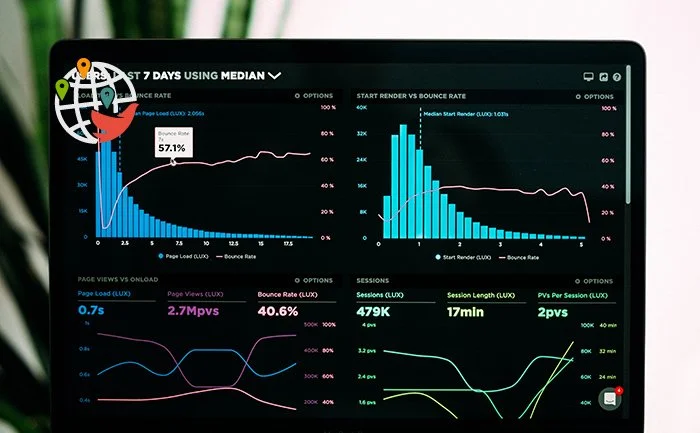Unemployment in Canada is rising and jobs are becoming scarce

How does this affect the growth rate of the economy? And what does the Bank of Canada key rate have to do with inflation?
The labor market situation in Canada is getting tougher, with the unemployment rate rising for the third consecutive month. And this may indicate that the pace of economic growth will slow down.
On Friday, Statistics Canada (StatCan) reported that the number of jobs in the country fell by 6,400. At the same time, the unemployment rate rose to 5.5% because the Canadian economy is unable to create enough jobs to keep up with population growth.
According to StatCan, job losses in July were seen in the construction industry, while the largest job gains were seen in social assistance and health care.
May was a turning point for the labor market. The unemployment rate in the last month of spring rose for the first time in 9 months. Prior to that, the unemployment rate in Canada was at 5%, which is slightly higher than the historic low of 4.9% that was reached last summer.
As Canada's population continues to grow, rising unemployment may be a sign that the economy is not creating enough jobs to absorb the ever-growing labor force. Job openings are also falling, another sign of a weakening labor market.
James Orlando — director of TD Economics — notes that high population growth does a lot to help the economy stay afloat. After all, new Canadian residents increase demand. So instead of high interest rates leading to direct job losses, we've seen the unemployment rate rise.
"When people come to Canada, even if they don't get a job right away, they're consumers, right? They're looking for housing, they need to buy food, they need to buy clothes. And so they're buying stuff within the economy. And that is a demand shock. It's putting a floor under the economy at a time when most people would have thought it would be contracting," Orlando explains.
The Canadian economy has been beating expectations this year, prompting the Central Bank of Canada to raise interest rates in June and July. By raising borrowing costs for consumers and businesses, the Bank of Canada hopes the economy will slow enough to bring inflation back to its 2% target.
James Orlando suggests that the Bank of Canada does not need to raise interest rates again in September. Regarding the unemployment situation, TD Economics predicts that economic growth will continue to slow and this will push the unemployment rate up to 6.5% by the end of 2024.
BMO Chief Economist Douglas Porter agrees that the chances of a rate hike in September are diminishing.
"The soft July employment report is just the latest arrow in the quiver of signs that the economy is losing momentum. Along with the recent friendly CPI result, we believe that the case for the Bank of Canada moving to the sidelines is now very strong," Porter notes.
But with underlying price pressures and wage growth remaining high, Porter admits rates will remain high for quite some time.
Canada's core inflation dropped to 2.8% in June, which is within the Bank of Canada's target range of 1% to 3%. However, core inflation figures, which do not take volatility into account, show that prices are still rising quite rapidly. New forecasts from the Central Bank of Canada suggest that inflation will not return to the 2% target until mid-2025. The Bank of Canada also suggests that rapid wage growth may make it more difficult for inflation to return to target.
However, James Orlando argues that wage increases are a "lagging indicator." After all, workers receive wage increases that reflect the increase in inflation that has already occurred. Nevertheless, declining job openings and rising unemployment may indicate that the high rate of wage growth will not continue.
Toward the end, let's take a look at the Canadian employment statistics for July and compare them to the previous month's numbers:
- The unemployment rate is 5.5% (5.4% in June);
- The employment rate is 62% (62.2% in June);
- The participation rate is 65.6% (65.7%);
- The number of employed is 20,166,400 (20,172,800 in June);
- The number of unemployed is 1,166,800 (1,147,100 in June);
- The youth unemployment rate (15-24 years old) is 10.2% (11.5% in June);
- The unemployment rate for men (25 and over) is 4.6% (4.4% in June);
- The unemployment rate for women (25 and over) is 4.8% (4.4% in June).
Unemployment rates by province are as follows:
- Newfoundland and Labrador — 8.7% (8.8% in June);
- Prince Edward Island — 8.1% (8.2% in June);
- Nova Scotia — 7.7% (6.4% in June);
- New Brunswick — 6.2% (6.4% in June);
- Quebec — 4.5% (4.4% in June);
- Ontario — 5.6% (5.7% in June);
- Manitoba — 4.9% (4.3% in June);
- Saskatchewan — 5.1% (4.7% in June);
- Alberta — 6.1% (5.7% in June);
- British Columbia — 5.4% (5.6% in June).





























